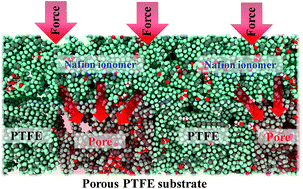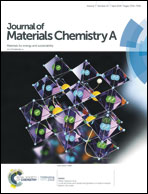Post-assembly modification of polymeric composite membranes using spin drying for fuel cell applications†
Abstract
Self-assembly of inter- and intraphases between the ionomer membrane and mechanical reinforcements in reinforced polymeric composite membranes is of great interest in both physics and chemistry, particularly for proton exchange membrane fuel cell (PEMFC) application. One of the greatest challenges is to obtain an optimally structured polytetrafluoroethylene (PTFE)-reinforced perfluorosulfonic acid (PFSA) composite membrane via solution processing. For high- performance and durable PEMFC applications, the self-assembly of interphases of the ionomers/reinforcements and intraphases of the ionomers in the composite PEM needs to be carefully tailored. Here, we show that post-assembly modification of a PTFE/PFSA composite membrane using a spin-drying method can significantly improve fuel cell performance and reliability. The forced assembly of PFSA ionomers during spinning results in greater infiltration yields into the porous PTFE media. In this way, spin-drying post-treatment results in lower gas crossover and improved mechanical durability. This process also yields larger regions of ionic clusters, which facilitate proton conduction at low relative humidity, affording higher fuel cell currents and greater efficiency.



 Please wait while we load your content...
Please wait while we load your content...